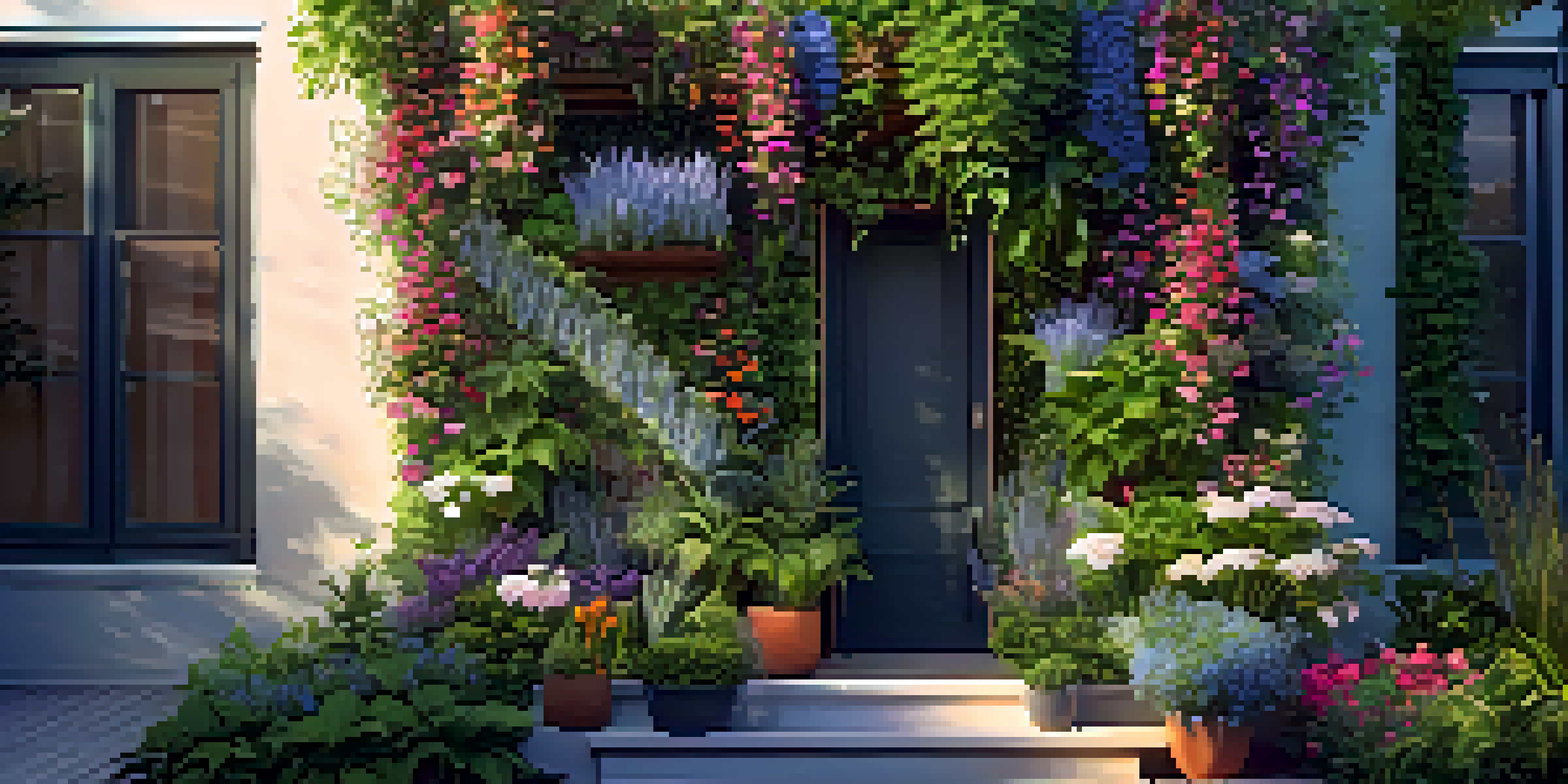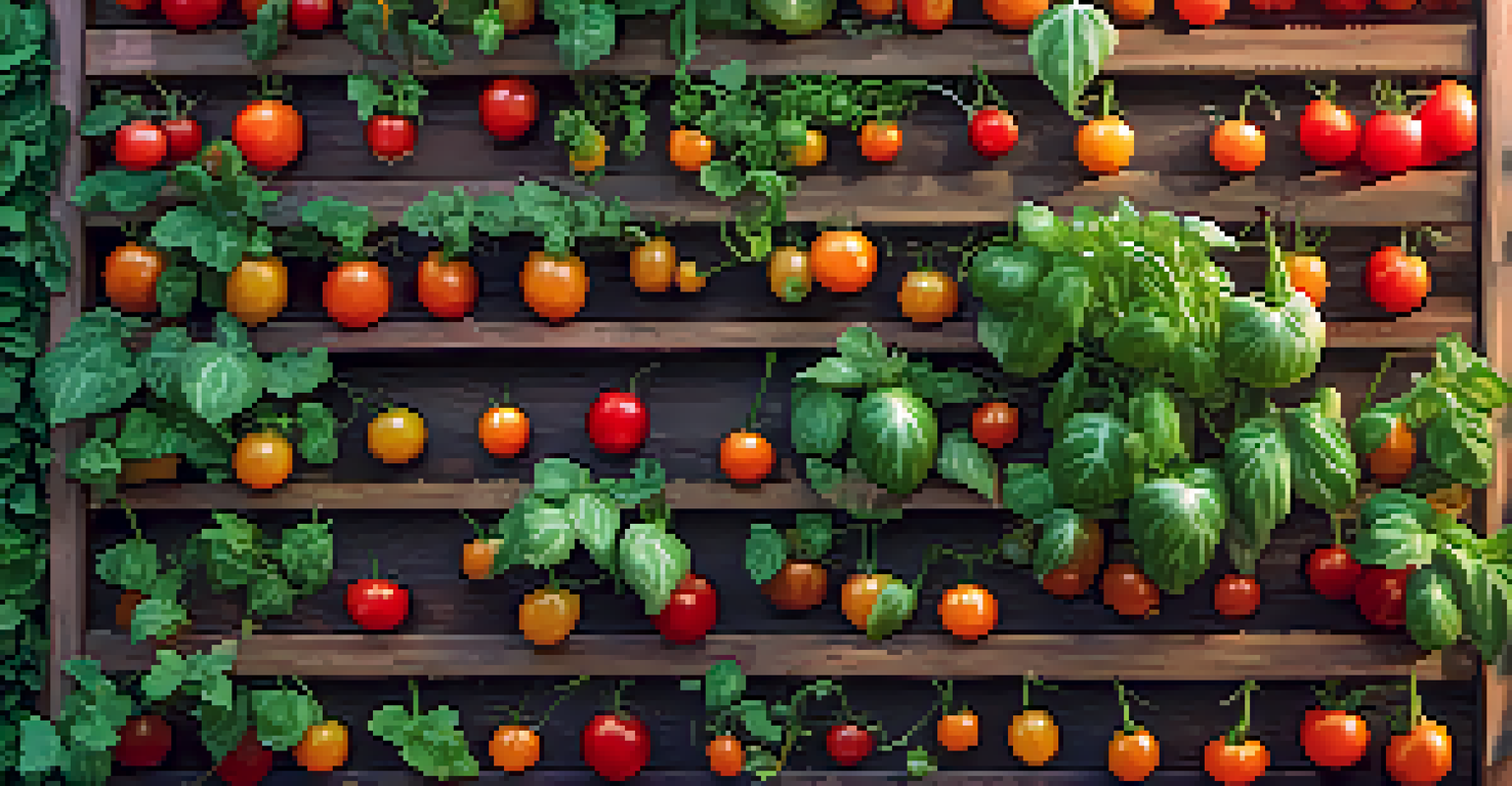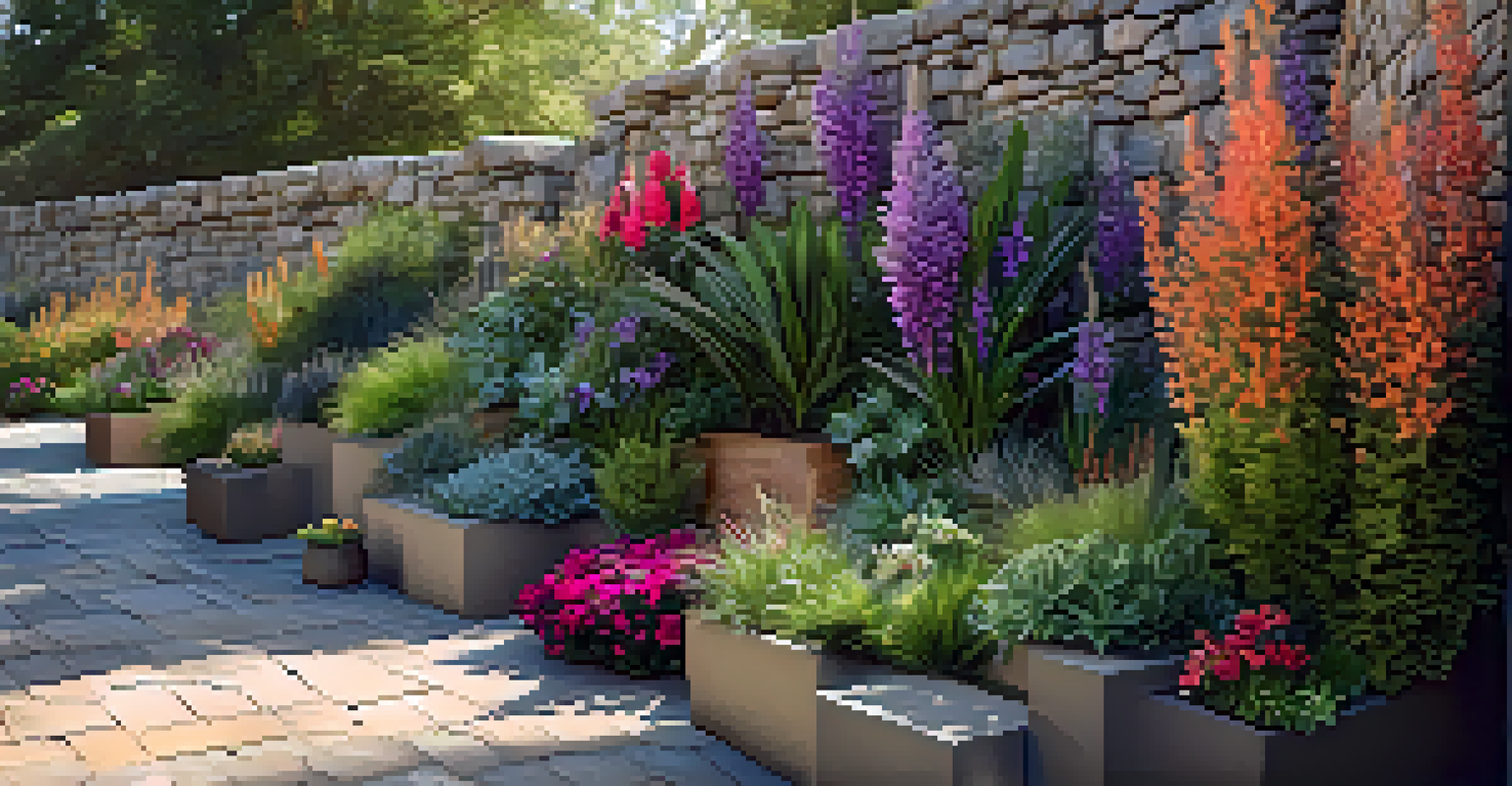How to Choose the Right Plants for Vertical Gardening

Understand Your Vertical Gardening Space and Conditions
The first step in choosing the right plants for vertical gardening is to assess the space you have available. Consider factors like sunlight exposure, wind patterns, and the overall climate in your area. Gardens that receive full sun may thrive with sun-loving plants, while shadier spots might require shade-tolerant varieties.
Gardening is a way of showing that you believe in tomorrow.
In addition to light, think about how much vertical space you have. Some plants can grow quite tall, while others will only spread out. Understanding the dimensions of your space helps you choose plants that will fit well and not overcrowd each other.
Lastly, consider your garden's microclimate. Areas near walls or fences might be warmer or cooler than other parts of your yard, affecting which plants will thrive. By identifying these unique conditions, you can create a more successful vertical garden.
Choose Plants Based on Growth Habits and Size
When selecting plants for your vertical garden, it's crucial to think about how they grow. Some plants, like climbing vines, naturally ascend structures, while others may require supports or trellises. Understanding these growth habits will help you create a more visually pleasing and functional garden.

Additionally, consider the size of the plants when fully grown. Compact plants like herbs or small flowering varieties can be perfect for limited spaces, while larger plants might overpower your vertical setup. Always check the expected height and spread of the plants before planting them.
Assess Your Vertical Garden Space
Understanding your available space, sunlight, and microclimate is crucial for selecting the right plants.
Mixing different growth habits can add visual interest to your vertical garden. For instance, pairing cascading plants with upright varieties can create a stunning layered effect. Just be sure that each plant can thrive without competing too harshly for resources.
Consider Plant Care Requirements and Maintenance
Different plants come with varying levels of care and maintenance, which can significantly impact your vertical garden's success. Some plants may require frequent watering and pruning, while others are more forgiving and low-maintenance. Understanding these needs will help you choose plants that match your gardening style and lifestyle.
The love of gardening is a seed once sown that never dies.
It's also essential to consider the soil and fertilization requirements of your chosen plants. Some may thrive in well-draining soil, while others may prefer nutrient-rich environments. Matching these needs to your gardening setup will lead to healthier plants and a more vibrant garden.
Finally, always think about the potential for pests and diseases. Some plants may be more susceptible to common garden issues, while others can resist them better. Choosing resilient plants can save you a lot of time and effort in the long run.
Select Plants That Complement Each Other
When designing your vertical garden, it's essential to choose plants that complement each other in color, texture, and growth habits. This not only enhances the visual appeal but also helps in the overall health of your garden. For example, pairing leafy greens with vibrant flowers can create a stunning display.
Consider the blooming seasons of your plants as well. By selecting plants that bloom at different times, you can ensure that your vertical garden remains colorful throughout the year. This dynamic approach keeps your garden lively and engaging.
Choose Complementary Plants
Selecting plants that harmonize in color, texture, and care requirements enhances both the beauty and health of your garden.
Additionally, think about plant compatibility regarding their care requirements. Grouping plants with similar water and light needs can simplify maintenance and create a harmonious environment. This strategy can lead to a healthier and more resilient vertical garden.
Incorporate Edible Plants for a Functional Garden
One of the most rewarding aspects of vertical gardening is the opportunity to grow your own food, even in small spaces. Incorporating edible plants like herbs, vegetables, and fruits can make your vertical garden not only beautiful but also functional. Imagine snipping fresh basil or harvesting cherry tomatoes right from your garden!
When choosing edible plants, consider their growth habits and how they will fit into your vertical space. Some vegetables, like pole beans or cucumbers, are perfect for climbing, while others might need to be spaced out. Planning accordingly will maximize your yield and keep your garden organized.
Don't forget about the aesthetic appeal of edible plants! Many herb plants have lovely flowers, and colorful vegetables can add visual interest. Combining beauty with functionality can make your vertical garden a feast for the eyes and the palate.
Think About Seasonal Changes and Plant Lifespan
Understanding seasonal changes is vital when selecting plants for your vertical garden. Some plants thrive in summer and die back in winter, while others may be perennials that last for multiple seasons. This knowledge helps you create a garden that looks great year-round.
Consider implementing a mix of annuals and perennials in your vertical garden design. Annuals can provide vibrant color and variety every year, while perennials offer stability and longevity. This combination can create a dynamic garden that evolves with the seasons.
Incorporate Edible Plants
Including edible plants like herbs and vegetables not only beautifies your vertical garden but also provides fresh produce right at your fingertips.
Additionally, think about the lifespan of your chosen plants. Some may require replanting each year, while others can thrive for many years. Balancing these aspects will help ensure that your vertical garden remains vibrant and engaging without excessive labor.
Utilize Local Resources and Expert Advice
When embarking on your vertical gardening journey, don't hesitate to tap into local resources. Many gardening centers or community gardens offer advice on which plants thrive best in your region. This local knowledge can save you time and effort in choosing the right plants.
Additionally, consider joining local gardening clubs or online forums. Engaging with fellow gardeners can provide valuable insights, tips, and inspiration for your vertical garden. Sharing experiences can help you avoid common pitfalls and discover new planting ideas.

Finally, remember that gardening is a learning experience. Don't be afraid to experiment with different plants and combinations. Over time, you'll find what works best for your vertical space, making your garden a personal reflection of your style and preferences.